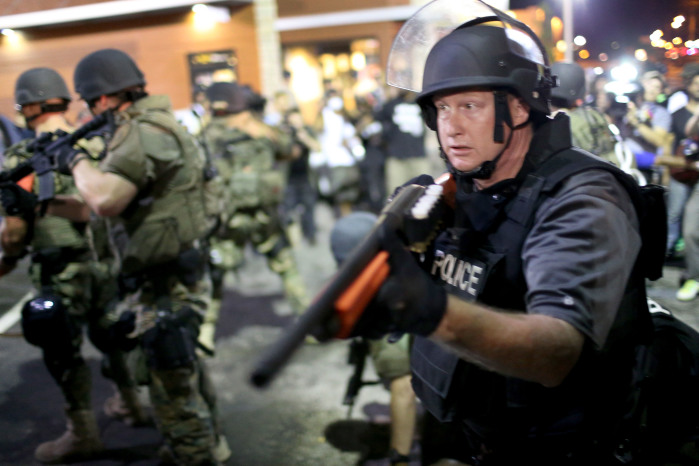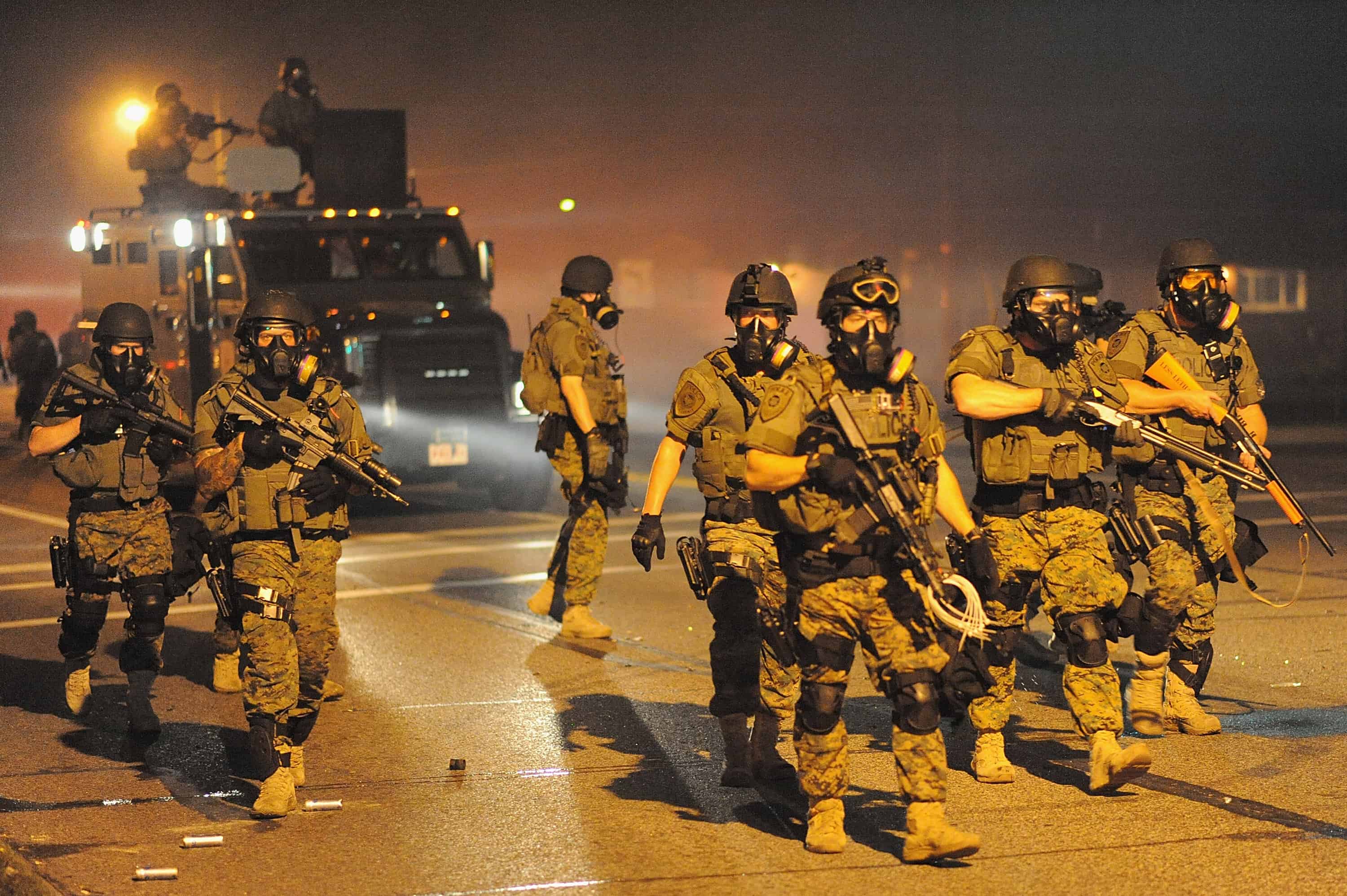WASHINGTON, D.C. – U.S. President Barack Obama has ordered a review of federal programs that supplied nearly half a billion dollars in military equipment to municipal police departments last year, amid criticism of the heavily armed response by local law enforcement agencies to protests in Ferguson, Missouri.
The review probably will include the Defense Department’s Excess Property program, which is designed to give away tents, generators, pickup trucks and all-terrain vehicles, as well as military aircraft, grenade launchers and heavily armed tactical vehicles. That program has distributed $4.3 billion worth of equipment since 1997, according to its website.
“Among other things, the president has asked for a review of whether these programs are appropriate,” said a senior administration official, who was not authorized to speak on the record about the internal assessment. The review also will assess “whether state and local law enforcement are provided with the necessary training and guidance; and whether the federal government is sufficiently auditing the use of equipment obtained through federal programs and funding.”
The official said the review will be led by White House staff, including the Domestic Policy Council, the National Security Council and the Office of Management and Budget, along with the Defense, Homeland Security, Justice and Treasury departments. The administration’s plans were first reported by The New York Times on Saturday.
Obama’s order comes amid criticism from members of Congress, civil rights groups and news media pundits over the heavy militarization of police departments in Ferguson and across the country. During the nearly two weeks of nightly protests in the St. Louis suburb after an unarmed teenager was shot and killed by a Ferguson officer Aug. 9, police dressed in riot gear employed armored vehicles, noise-based crowd-control devices, shotguns, M4 rifles like those used by forces in Iraq and Afghanistan, rubber-coated metal pellets and tear gas.
Sen. Claire McCaskill, D-Mo., said last week that she will hold a congressional hearing in September to examine whether local police have become too militarized. “This kind of response by the police has become the problem instead of the solution,” she said.
“This equipment flowed to local police forces because they were increasingly being asked to assist in counterterrorism,” Attorney General Eric Holder Jr. said in a statement Saturday. “But displays of force in response to mostly peaceful demonstrations can be counterproductive. It makes sense to take a look at whether military-style equipment is being acquired for the right purposes and whether there is proper training on when and how to deploy it.”
Transfers through the Pentagon’s program have increased dramatically in recent years.
In 2006, it made 34,708 transfers worth $33 million to law enforcement agencies. Last year, the number grew to 51,779 transfers valued at $420 million, according to data provided by the Defense Logistics Agency, which manages the program. Through April of this year, the agency had made 15,516 transfers of equipment worth $206 million.
“Of all the equipment provided to law enforcement agencies through the LESO [1033] program, only 5 percent are weapons,” DLA spokeswoman Michelle McCaskill said. Since the program started nearly two decades ago, it has transferred equipment valued at $5.1 billion.

The Ferguson police have received a small amount through the program in recent years, including non-tactical items such as field packs, first-aid kits, wool blankets and medical supplies.
The Defense Department would not provide a breakdown of tactical items given to the Ferguson police exclusively, but it said that law enforcement agencies in St. Louis County — which includes Ferguson — have in recent years received a dozen 5.56mm rifles, half a dozen .45-caliber pistols, night-vision goggles and a bomb-disposing robot.
Other federal programs also have facilitated the militarization of local law enforcement agencies, said Kara Dansky, senior counsel at the American Civil Liberties Union’s Center for Justice and the lead author of a June report about the issue. Police departments also have access to billions of dollars in funding from the Justice and Homeland Security departments.
“The militarization of policing is actually not a new problem,” Dansky said.
© 2014, The Washington Post






